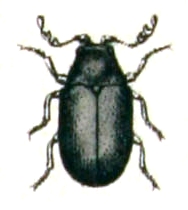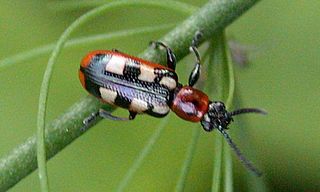
Crioceris, or asparagus beetle, is a genus of the family Chrysomelidae of beetles. The name is Neo-Latin from Greek κριός, ram and κέρας, horn. Not all species in the genus Crioceris feed on asparagus. Some studies have found low genetic diversity among groups of isolated Chrysomelidae, and use Wolbachia species as a genetic marker.

Ptinidae is a family of beetles in the superfamily Bostrichoidea. There are at least 220 genera and 2,200 described species in Ptinidae worldwide. The family includes spider beetles and deathwatch beetles.

Dorcatominae is a subfamily of death-watch and spider beetles in the family Ptinidae. There are about 16 genera and at least 190 described species in Dorcatominae.

Lasioderma is a genus of beetles in the family Ptinidae. As of 1990, there were over 50 species in the genus.
Dorcatoma falli is a species of beetle in the family Ptinidae.
Dorcatoma setulosa is a species of beetle in the family Ptinidae.

Dorcatoma chrysomelina is a species of beetle in the family Ptinidae. It is associated with the fungus known as crab-of-the-woods.
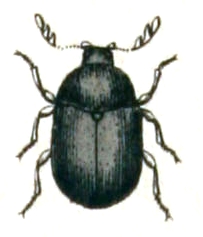
Dorcatoma dresdensis is a species of beetle in the family Ptinidae.

Ptinus is a genus of beetles distributed throughout much of the world, including Africa, the Australian region, the Palearctic, the Near East, the Nearctic, and the Neotropical realm. It is a member of the subfamily Ptininae, the spider beetles.
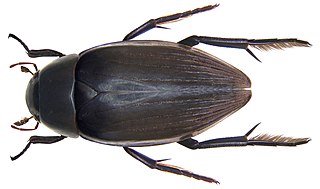
Hydrophilus is a genus of beetles in the family Hydrophilidae, the water scavenger beetles. There are 53 species in three subgenera in the genus: Hydrophilus, Dibolocelus, and Temnopterus.

Andogyrus is a subgenus of Macrogyrus, a genus of beetles in the family Gyrinidae. It was formerly considered a distinct genus, until a phylogenetic study in 2017 downgraded it in rank to a subgenus. It contains the following species:
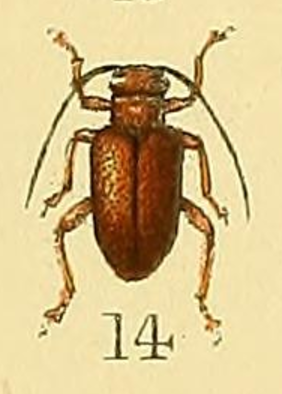
Entelopes is a genus of longhorn beetles of the subfamily Lamiinae, containing the following species:
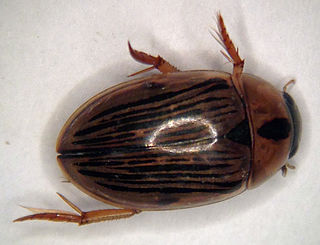
Tropisternus is a genus of hydrophilid beetles with 63 species in five subgenera in North and South America.
Colasposoma grande is a species of leaf beetle found in Yemen, Oman, Saudi Arabia and the United Arab Emirates. It was first described by Édouard Lefèvre in 1890. It was originally placed in the genus Eryxia, but was moved to the genus Colasposoma by Stefano Zoia in 2012.
Tricorynus bifoveatus is a species in the family Ptinidae, in the order Coleoptera ("beetles"). It is found in North America.
Ceramida is a genus of scarab beetles that are endemic to the southern Iberian Peninsula. Some of its species are pests, primarily of olive trees. Its taxonomy is uncertain due to its unclear diagnostic characteristics.
Eulychius is a genus of leaf beetles in the subfamily Eumolpinae. It is found in Madagascar.

Meristata is a genus of Asian leaf beetles in the subfamily Galerucinae. Most of the species in the genus are found along the Himalayas in the China and the Indian Subcontinent.
Brownephilus is a genus of water scavenger beetles in the family Hydrophilidae containing two described species. Brownephilus was formerly a subgenus of Hydrobiomorpha and was elevated to genus by Andrew E.Z. Short in 2010.
Scymnus (Neopullus) fuscatus, is a species of lady beetle found in Japan, Formosa, China, Philippines, Sunda Islands, India, Sri Lanka, Nepal and Australia.
